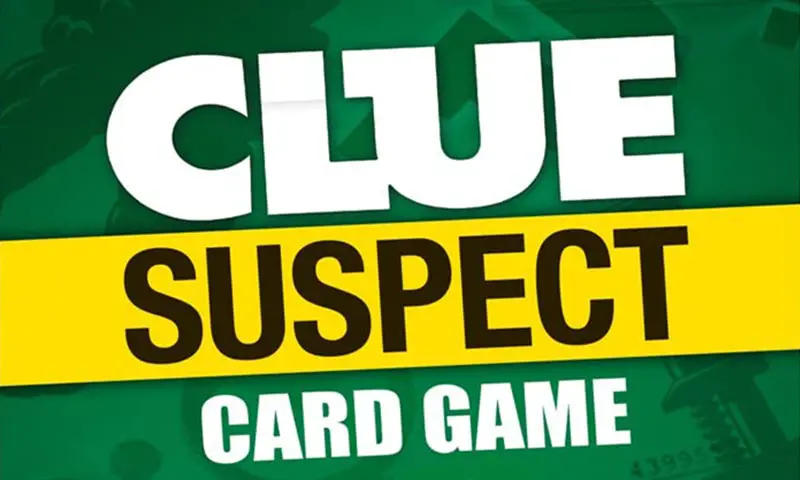
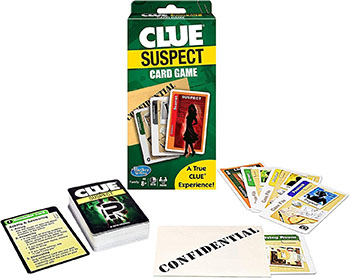
Components
- 2 Decks of Cards
- 1 Confidential Envelope
- Illustrated Instructions
Object of the Game
It's all the intrigue of Clue, in minutes! Use your detective skills to solve the mystery and make an accusation - who did it, with what and where!
The first person to solve the crime wins!
Setup
-
Take all the cards marked with a
 out of the game (3x orange cards and 12x white cards).
out of the game (3x orange cards and 12x white cards).The
 cards are only for the advanced 2-4 player game.
cards are only for the advanced 2-4 player game.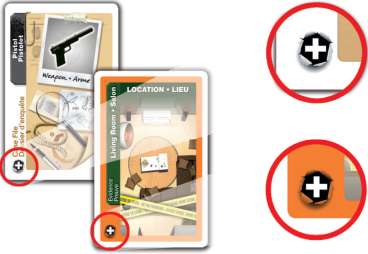
-
Your Case Files
Give each player a set of 12 case file cards.
Each set is marked in the corner with a
 . Make sure all cards in a set have the same symbol.
. Make sure all cards in a set have the same symbol.
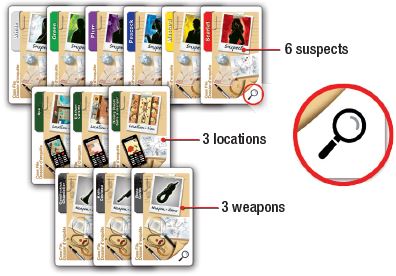
Everyone starts with the same case file card items.
Put aside any spare sets.
-
The Crime
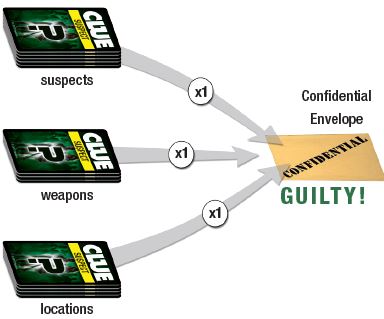
Separate the orange evidence cards into 3 piles (suspects, weapons and locations). Shuffle each pile, keeping them facedown.
Without looking, place one card from each pile facedown in the Confidential Envelope. This is the crime, and stays secret until someone makes an accusation.
-
The Evidence
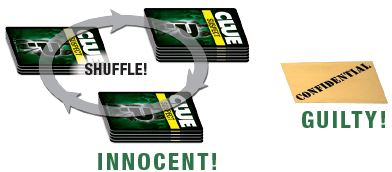
Shuffle the rest of the evidence cards together. Deal them out facedown so everyone has an equal number. Spare cards go face up in the middle, for all to see.
Look at your own case file cards and evidence cards (including any face up in the middle). Any evidence cards you can see are innocent - they can't be underneath the crime card.
Secretly put any case file cards that match the evidence cards you can see facedown in a pile - this is your "innocent pile".
Keep your evidence cards in your hand at all times.
Keep All your Cards Hidden From Other Players.
Played Clue before? This game is similar.
You will be trying to deduce who committed the crime, with what weapon
and where, by asking players questions. The first player to solve the crime wins.
Every time a player shows you an evidence card, you know it's not in the Confidential Envelope. Put its matching case file card from your hand onto your innocent pile-this is like crossing things out on a Clue notepad.
Time to start investigating! The oldest player goes first.
Game Play
On your turn:
-
Player Asking
Look at your cards. Ask the player to your left about any two items you think might have been involved in the crime.
You can ask about different item types like "Scarlet and the rope", or the same type like "the rope or the candlestick".
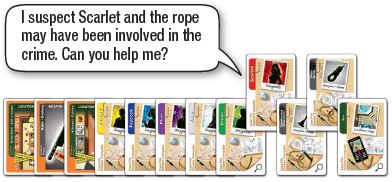
-
Player Answering
When a player asks you a question, check the orange evidence cards in your hand.
Do you have one of the evidence cards they asked about? Show it to the asker and no one else. Be honest! If you lie, the game won't work!
Do you have both evidence cards they asked about? Choose only one of these cards to show the asker (without revealing that you have both).
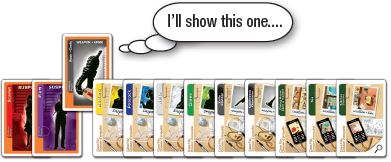
If you have none of the evidence cards, say "No, I can't help you".
-
Player Asking
If the first player on your left can't help you, ask the next player the same question. Keep asking until someone shows you an evidence card, or until you've asked everyone.
If nobody has any of the evidence cards you asked about, you know that one or both of those pieces of evidence is under the crime card. See Tips and Tactics for details.
Once you've seen an evidence card, you know it's not in the Envelope - it's innocent. Put its matching case file card facedown onto your innocent pile.
Unsure of a card's innocence?
Keep it in your hand. Your turn is over. Now the player on your left asks a question.
Keep playing like this until you think you've figured out who did it, with what and where. Ready to accuse? See How to Accuse.
Pay attention even when it's not your turn. You could learn vital clues.
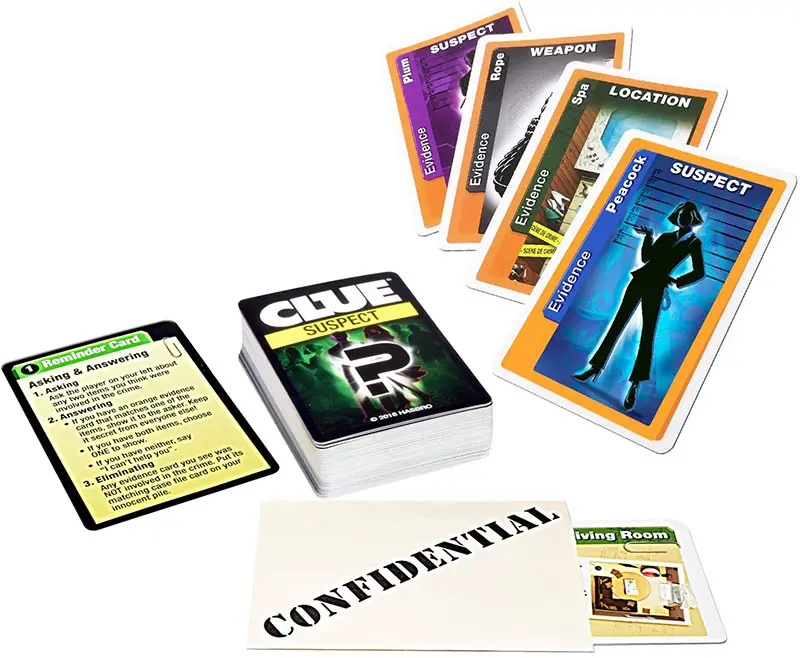
Tips and Tactics
When you're 100% sure a piece of evidence was involved, get rid of all other cards of that type. For example, if you're sure the knife was involved, put all the other weapon case file cards facedown onto your innocent pile.
Bluff by asking about one evidence card you DO have and one you don't.
Remember which players have seen your evidence cards so that you reveal the least amount of information possible.
Accuse before you have all the evidence if you think someone else might get there before you - but wait for your turn to do this!
How to Accuse
On your next turn, say you want to accuse, and lay the three case file cards you think were involved facedown on the table (separate to your innocent pile).

(your accusation: who, what, where)
Ask if anyone else wants to accuse.
Is It Only you Accusing?
Peek at the cards in the Envelope (don't show anyone else!).
If the 3 cards in the Envelope match your accusation, you win! Pull the three cards out of the Envelope to prove it.
If your cards don't match, you lose! Other players keep playing. You can no longer ask questions or accuse, but you must truthfully answer questions when asked.
More Than One Person Accusing?
Everyone must do the same.
Decide who was first, second, third or last to accuse. All players put their three accusation case file cards facedown. Everyone ready? Turn your accusations faceup at the same time.
Accuser #1: Turn over the cards under the crime card. If they match your accusation, you win!
Accuser #1 didn't win? The next player (in order of who was second, third or last to accuse) with a matching accusation wins.
If nobody wins, the criminal has outwitted you all. Go back to detective school!
Special Rule For 2 Players
Ask questions and accuse as before except:
If it's just 2 of you playing, when one of you accuses, the other player must do the same.
Continue Reading


